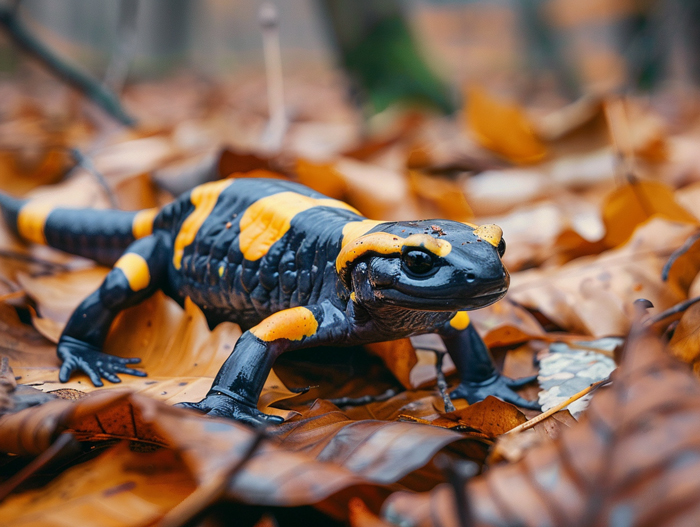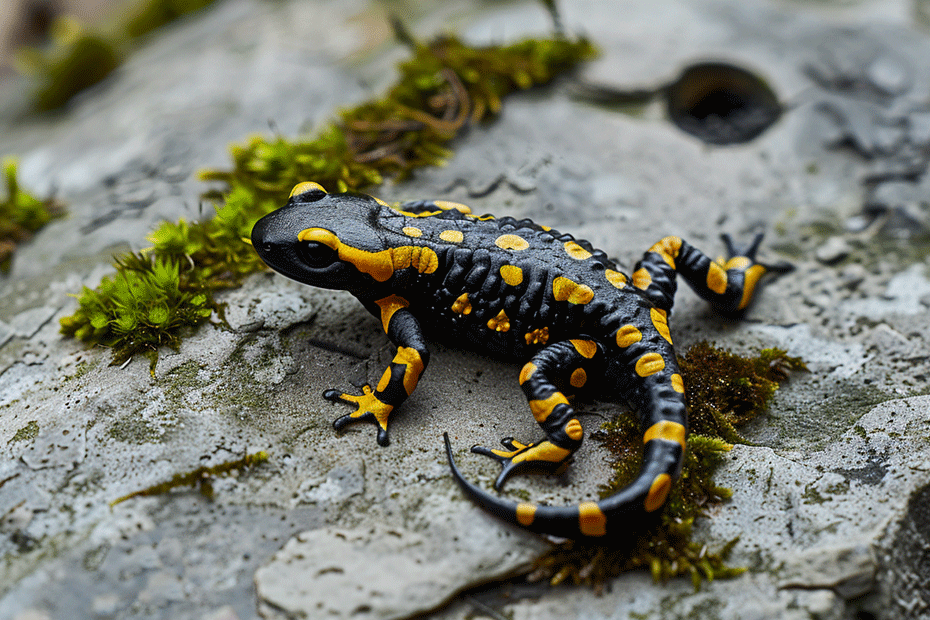Curious about the captivating world of salamanders and their vibrant colors? You might be surprised to discover the diverse range of hues these fascinating creatures can display. From earthy browns and mossy greens to striking yellows and fiery oranges, salamanders come in a spectrum of colors that blend seamlessly with their natural habitats. Whether you’re a nature enthusiast or simply intrigued by the wonders of the animal kingdom, exploring the colors of salamanders can offer a glimpse into the beauty of these elusive amphibians.
The intricate patterns and shades found on salamanders not only serve as camouflage but also reflect their unique adaptations to different environments. As you investigate deeper into the world of these remarkable creatures, you’ll uncover the secrets behind their color variations and how they play a crucial role in their survival. Join us on a journey to unravel the mystery of what colors adorn these enchanting amphibians and gain a newfound appreciation for the wonders of nature.
Key Takeaways
- Salamanders exhibit a wide variety of colors, including earthy browns, vibrant reds, mossy greens, and fiery oranges, to blend into their diverse habitats.
- Color variations in salamanders are influenced by factors such as environment, temperature, age, species genetics, and ultraviolet light perception.
- Different coloration serves specific purposes: forest-dwelling salamanders use earthy tones for camouflage, toxic species display bright colors as a warning signal, and aquatic salamanders adopt subdued hues for underwater concealment.
- The vibrant colors of salamanders play a significant role in evolution, aiding in mate selection, camouflage techniques, warning signals for predators, and overall survival in diverse habitats.
Exploring Salamander Colors

Understanding the Diversity of Salamander Species
- Salamanders come in various colors to blend into their surroundings.
- With over 700 species worldwide, colors can vary greatly depending on habitat.
Common Colors Found in Salamanders
- Earthy browns, vibrant reds, mossy greens, and fiery oranges are common hues.
- Cryptic patterns help them hide from predators or ambush prey effectively.
- Environment, temperature, age, and species genetics all play a role.
- Ultraviolet light perception also impacts their coloration.
Unravel the captivating world of salamander colors to appreciate nature’s incredible spectrum.
Color Adaptations in Different Habitats

Camouflage Strategies in Forest-dwelling Salamanders
- Forest-dwelling salamanders often display earthy browns and greens to blend seamlessly with their surroundings.
- These colors help them camouflage among leaves, rocks, and trees, making it challenging for predators to spot them.
- By utilizing cryptic patterns and blending in with their environment, forest-dwelling salamanders increase their chances of survival.
Bright Coloration in Toxic or Warning Salamanders
- Toxic or warning salamanders showcase vibrant hues like red, yellow, or orange to signal their poisonous nature.
- These bright colors serve as a warning to predators to avoid them, as they often contain toxins that can be harmful.
- By advertising their toxicity through their colors, these salamanders deter potential threats effectively.
- Aquatic salamanders feature subdued tones like blues, grays, and blacks to blend with the dim underwater environment.
- Their cryptic coloration helps them remain hidden from predators while hunting for prey in lakes, ponds, or streams.
- By adapting their colors to their aquatic habitat, these salamanders showcase remarkable camouflage strategies for survival.
Evolutionary Significance of Salamander Colors
Colors play a crucial role in the evolutionary history of salamanders. Let’s investigate into the significance of these vibrant hues in the intriguing area of these amphibians.

Role of Color in Mate Selection
- Vivid Colors: Salamanders use bright and distinct colors to attract potential mates.
- Signal Strength: Vibrant hues indicate genetic fitness and health to prospective partners.
- Mate Recognition: Specific color patterns aid in identifying suitable partners during breeding seasons.
- Camouflage Techniques: Salamanders adapt their colors to blend with their surroundings, evading predators effectively.
- Warning Signals: Toxic salamanders showcase bold colors as a deterrent, warning predators of their poisonous nature.
- Survival Advantage: Camouflaging using earthy tones or standing out with bright hues enhances survival chances in diverse habitats.
Let’s unravel the intricate evolutionary pathways guided by the vibrant colors of these extraordinary creatures.
Conclusion
Salamanders’ colors serve multiple purposes, from attracting mates to warning predators. Their vibrant hues are not just for show; they are vital for survival in their diverse habitats. Understanding the evolutionary significance of salamander colors sheds light on the intricate ways these amphibians have adapted to their environments. By leveraging their colors for mate selection and camouflage, salamanders have thrived in the wild for millions of years. The rich palette of colors seen in salamanders is a testament to the intriguing area of evolutionary biology and the wonders of nature’s design.

Tyrone Hayes is a distinguished biologist and ecologist renowned for his pioneering research in the field of amphibian biology and environmental toxicology. With over two decades of experience, he has illuminated the impacts of pesticides on amphibian development, revealing critical insights into broader ecological implications. Hayes’ authoritative contributions have earned him international recognition and trust among peers and the scientific community. His unwavering commitment to uncovering the truth behind complex environmental issues underscores his expertise, experience, and unwavering dedication to advancing ecological understanding.
